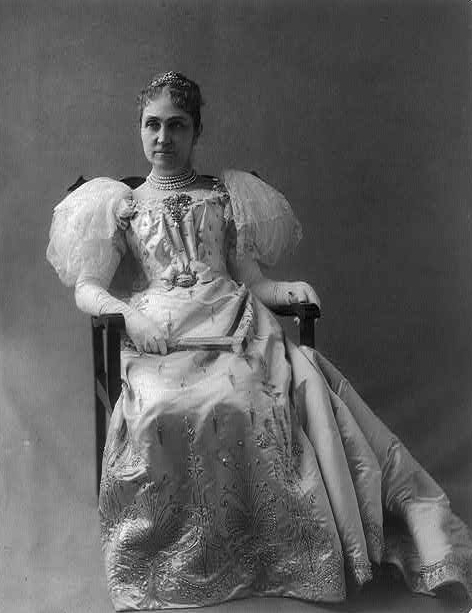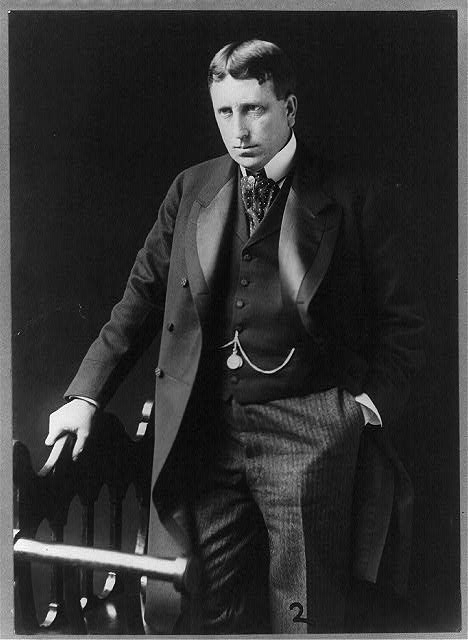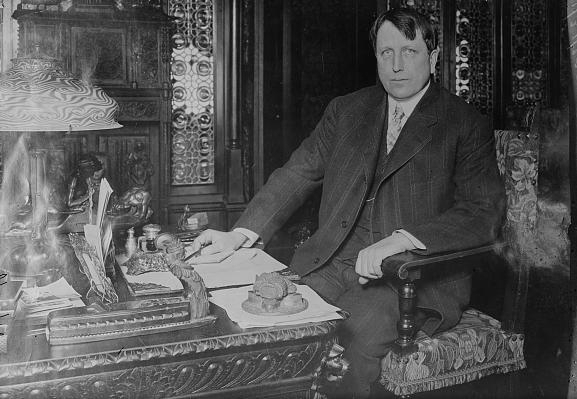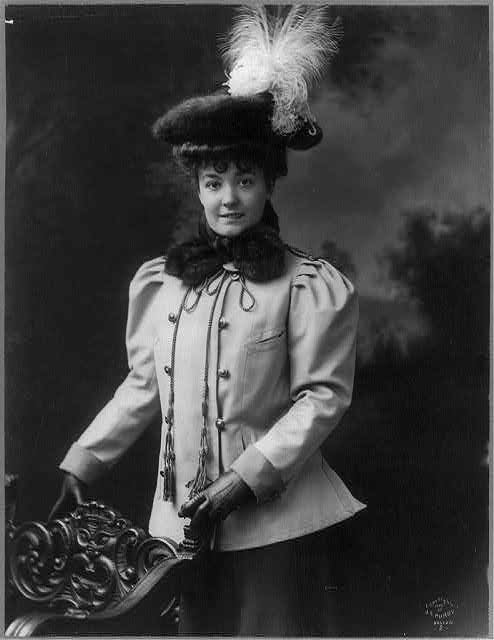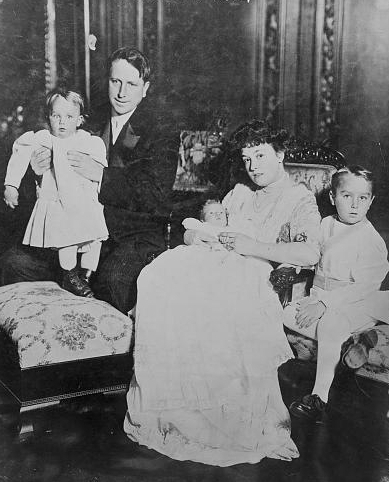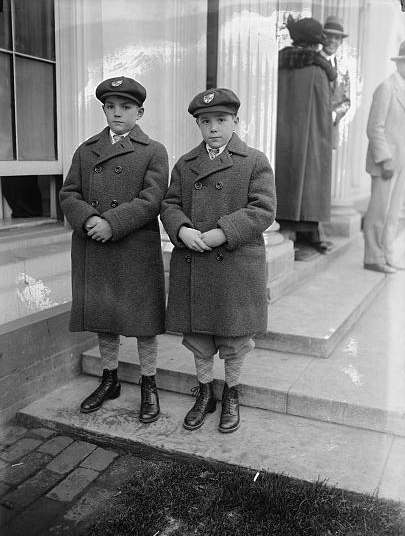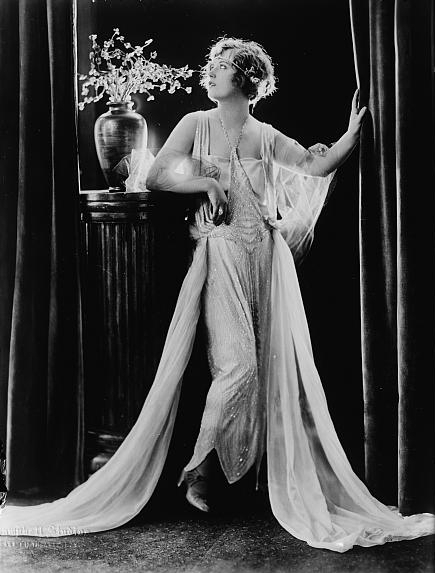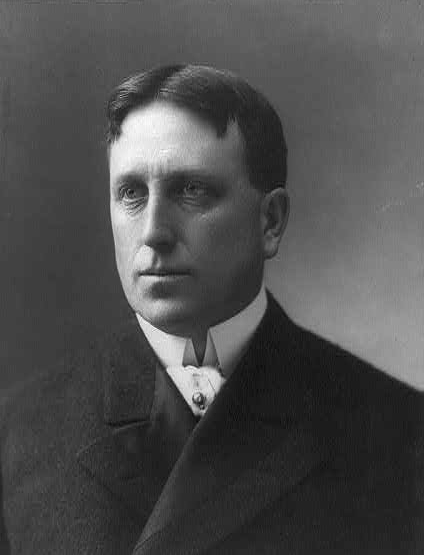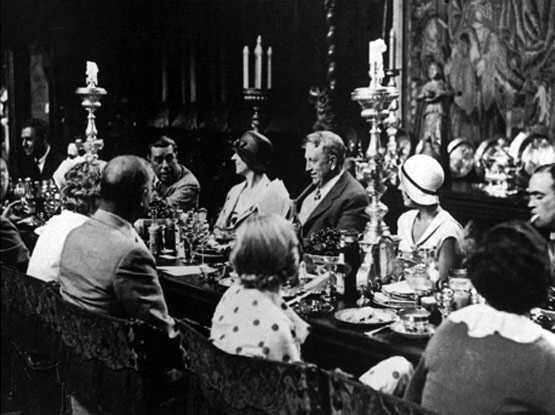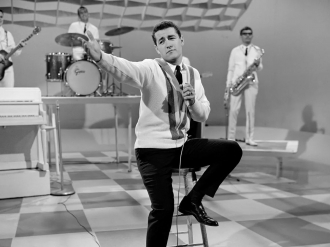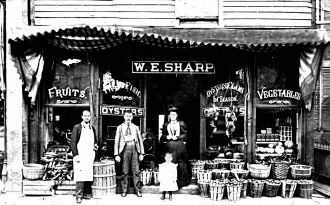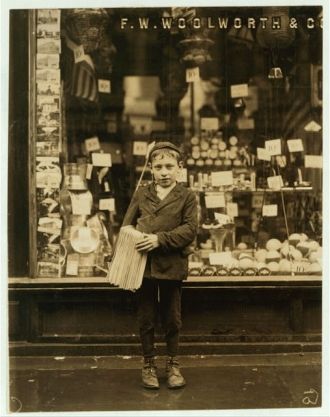
Phoebe (Apperson) Hearst in 1895
 AncientFaces
AncientFaces William Randolph Hearst was born April 29, 1863 in San Francisco, California. His father, George Hearst, was a millionaire - he owned a gold mine - and a U.S. Senator from California. His mother, Phoebe Elizabeth (Apperson) Hearst, was the first female Regent of the University of California at Berkeley and a suffragette. She left W.R. Hearst $10 million when she died in 1919 - over $146 million in today's dollars.
WR Hearst in 1904
 AncientFaces
AncientFaces His father had won the ownership of the San Francisco Examiner in 1880 - as payment for a gambling debt - so he decided to try his hand at journalism. He hired the best writers of the time - including Mark Twain - and adopted a populist agenda, publishing stories about municipal and financial corruption, even attacking companies in which his own family held an interest. Soon, his paper dominated the San Francisco market.
W.R. Hearst at his desk
 AncientFaces
AncientFaces But after a few years of fierce competition, both papers were losing money and they called a truce. This is when the Journal began making a profit. Hearst's political voice became more powerful - supporting (at first) the Russian revolution, and fighting against Wilsonian internationalism, the League of Nations, and the World Court, thereby appealing to an isolationist audience. And he expanded his empire, opening newspapers in other cities - among them Chicago, Los Angeles and Boston. By the 1920's, he owned newspapers in 28 cities nationwide, several magazines, and two wire services and an empire was truly born.
 AncientFaces
AncientFaces Hannah Willson, Millicent's mother, ran a brothel in New York City and it was said that she was connected with Tammany Hall, a powerful - and corrupt - political power. Since Hearst had political ambitions, this was seen as a shrewd political move.
W.R. and Millicent
 AncientFaces
AncientFaces While Hearst had a long-term affair with another woman, he and Millicent remained married until his death in 1951.
The Hearst Family, 1910
 AncientFaces
AncientFaces William Randolph, Millicent, George Randolph Hearst, born on April 23, 1904; William Randolph Hearst, Jr., born on January 27, 1908; and John Randolph Hearst, born in 1910.
Twins Randolph and Elbert
 AncientFaces
AncientFaces Their twins Randolph Apperson Hearst and David Whitmire (né Elbert Willson) Hearst, were born on December 2, 1915. In total, they had 5 sons.
 AncientFaces
AncientFaces In 1919, Marion and Hearst began a long-term affair. By this time, he had given up his dream of becoming President. While he was still married to Millicent, he and Marion lived openly - and entertained extensively at San Simeon, "Hearst Castle" for decades. Their daughter, Patricia Lake, was passed off as her niece.
W.R. Hearst, Congressman
 AncientFaces
AncientFaces In 1934, he visited Berlin and interviewed Hitler (he had checked with Jewish leaders first, assuring himself that his interview wouldn't hurt the Jewish community). When Hitler asked why the western press didn't like him, Hearst replied ""Because Americans believe in democracy, and are averse to dictatorship." But his papers carried columns written by Nazi leader Hermann Göring and Hitler - as well as Mussolini and other dictators in Europe and Latin America. And there was no rebuttal to the columns in the papers.
Dinner party at San Simeon
 Kathy Pinna
Kathy Pinna The Great Depression hit the Hearst empire hard and he had to close his movie company as well as many of his publications. This financial difficulty forced him to sell many of the antiques that he had bought for his home in San Simeon - now called "Hearst Castle." He died at age 88 in 1951 but much of his empire survived and his five sons - like their father, none of them graduated from college - carried on the empire.

